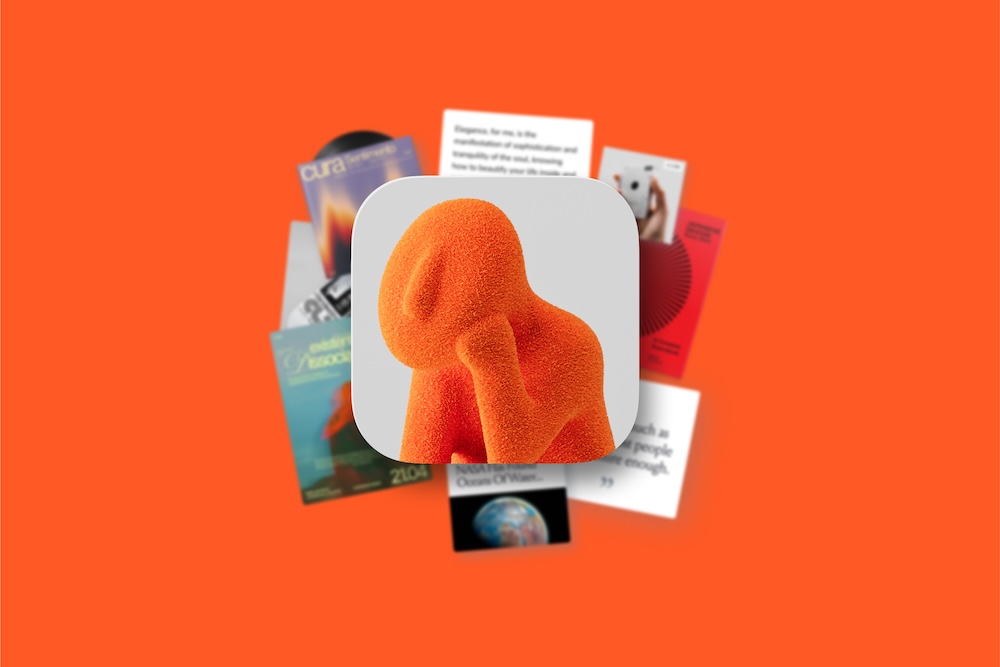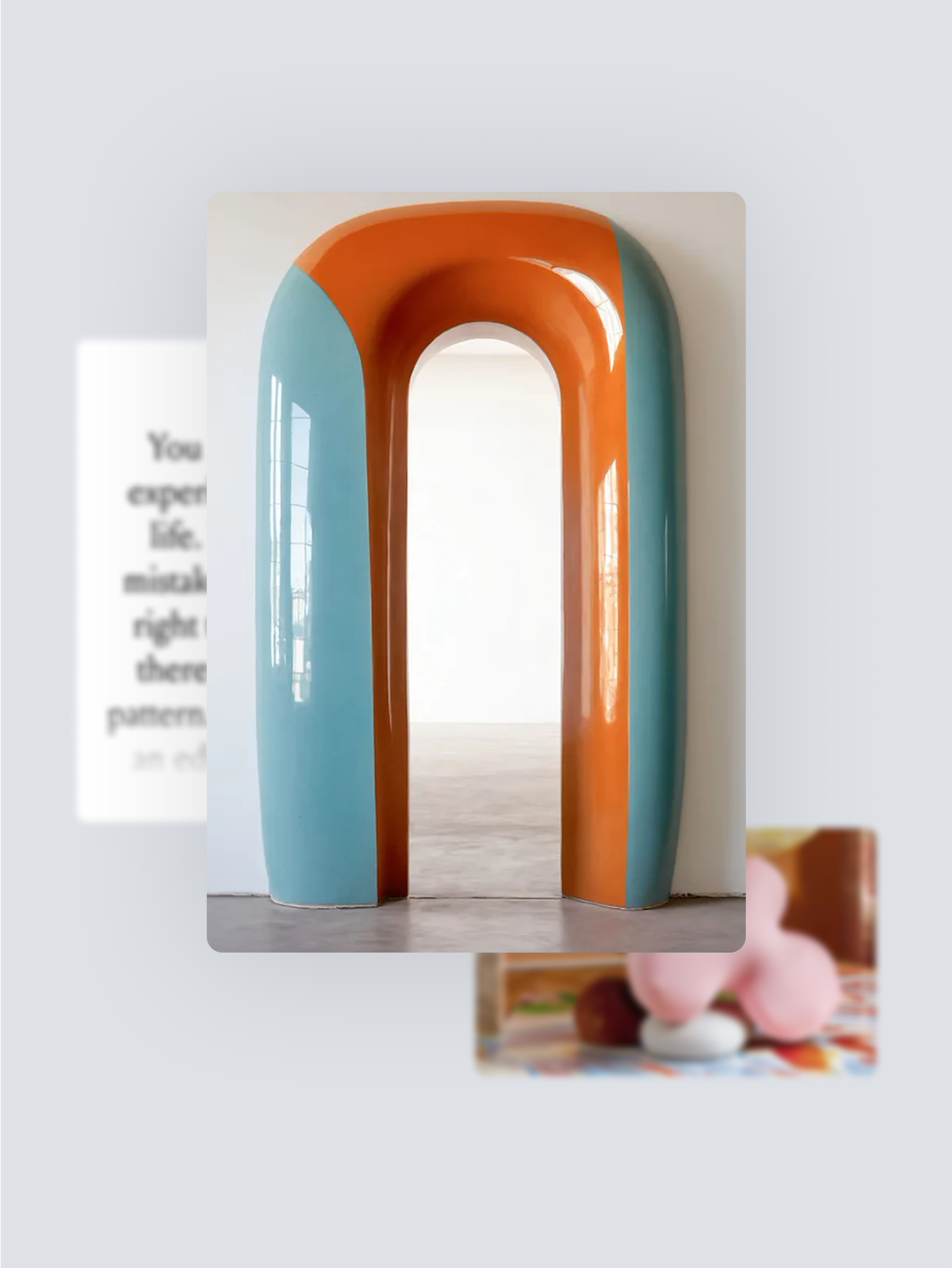How do you come up with an idea out of thin air?
You don't. You're drawing from your repertoire.
Think of your repertoire as the accumulation of everything you've ever seen or experienced, distilled to its essence. People with good ideas have a system of building their repertoire and using it to make unexpected connections – even if it's only happening in their head.
✦ Now, it can happen in mymind. ✦
The idea is to save inspiration, ideas and references with intention, trusting one day their meaning will be revealed. Here’s how we go about it.
Rule #1. Your repertoire should be private

If it's open to other people, you're immediately limiting yourself. You're trying to impress or meet expectations. It's like decorating a hotel room: It may be pretty and comfortable, but it's curated for other people. It's not you.
When your repertoire is private, there's no pressure to perform for anyone. You don't have to worry about being on brand, on trend, intellectual, consistent or appealing.
It's a beautiful feeling. Once you embrace it, you'll find all kinds of weird things in your repertoire. Real, interesting references that push you outside the agreeable box. You're now free.
(Besides: Nobody should be able to trace your steps when it comes to your work. You're the magician. Keep your secrets to yourself.)
Rule #2. Don't force it

You can't build your own repertoire in a few hours, days or even weeks. Don’t use someone else's Pinterest board, or dump a thousand images from some aesthetic website in there. This only clutters your repertoire and makes it meaningless.
The point is that everything in there means something to you specifically. That's where the magic happens. And you can't skip the magic.
Only once you've given a reference your “stamp of approval” does it land in your collection. Millions of living room references exist online, but the 100 or so you have in your repertoire are the best, according to your taste.
So how do you decide what goes inside?
Rule #3. Collect ambivalently and passively. Not indifferently.

Usually, we collect inspiration only for specific projects. But this means we're already narrowing our funnel considerably.
When building your repertoire, you want your funnel open at all times. Passively build it up every day. Eventually, you can then narrow that down for a specific project.
Every time you see an image or reference online that makes you feel something – save it. Ambivalently means you may have strong but opposing feelings toward something. Save those things. It just has to make you stop for a brief moment.

That image may have no immediate purpose. It's not for a current project. The only meaning is that it may mean something to you in the future. And this is the secret.
mymind works the same way your real mind works: It's a sponge of references, ideas, visuals, stories and things you care about. Everything you don't care about (feel indifferent about) isn't soaked up and slowly fades into oblivion.
Rule #4. No rules

Don't save what you think you should be saving. Don't overanalyze what you save, or what it means about you. Just save it. The significance will be revealed later.
There's no need for organization here either – that only disrupts your natural flow. If a particular reference has no immediate purpose, there's no folder or category for it. And you don't want organizing to add friction to your saving process. In mymind, you just search to find it later. No organization needed.
Now it's up to you
If you haven't already, start by installing the mymind browser extension and mobile app so you can save anything with a click. Be sure to watch a few videos on our YouTube channel to learn about all the different ways you can use your new mind. Then start passively but intentionally building your secret repertoire. Your future self will thank you for it. ⚘



